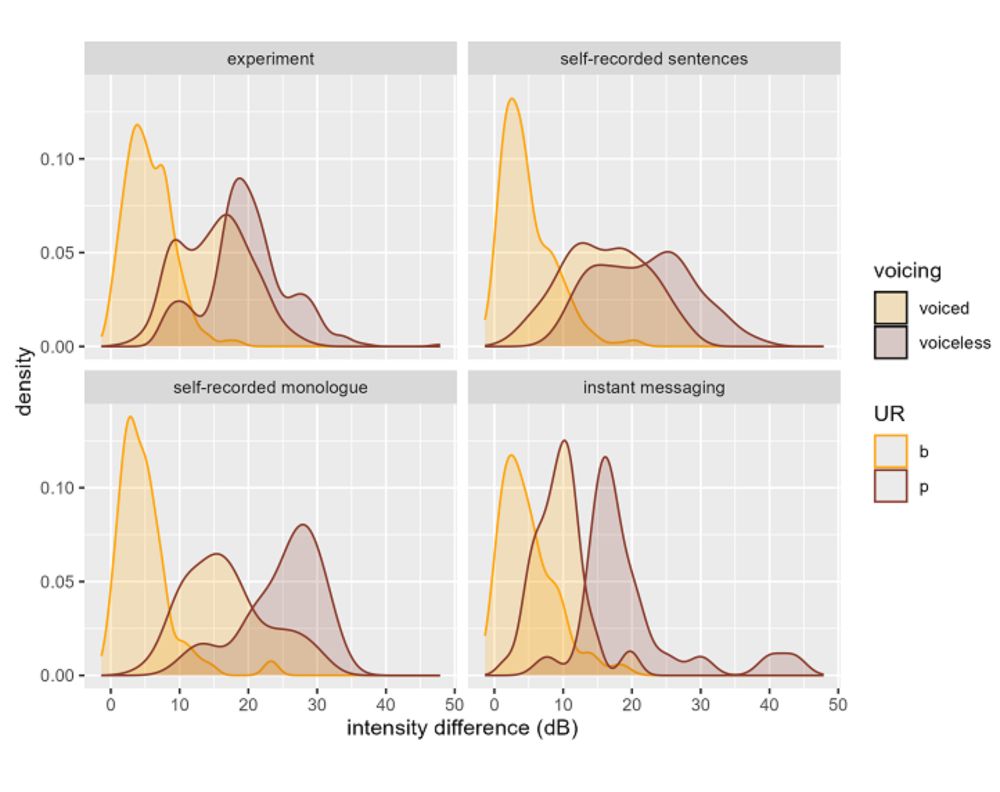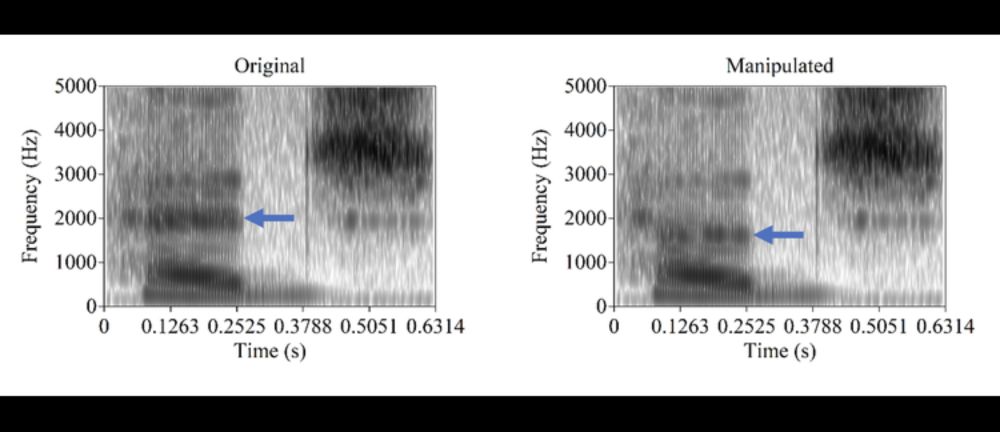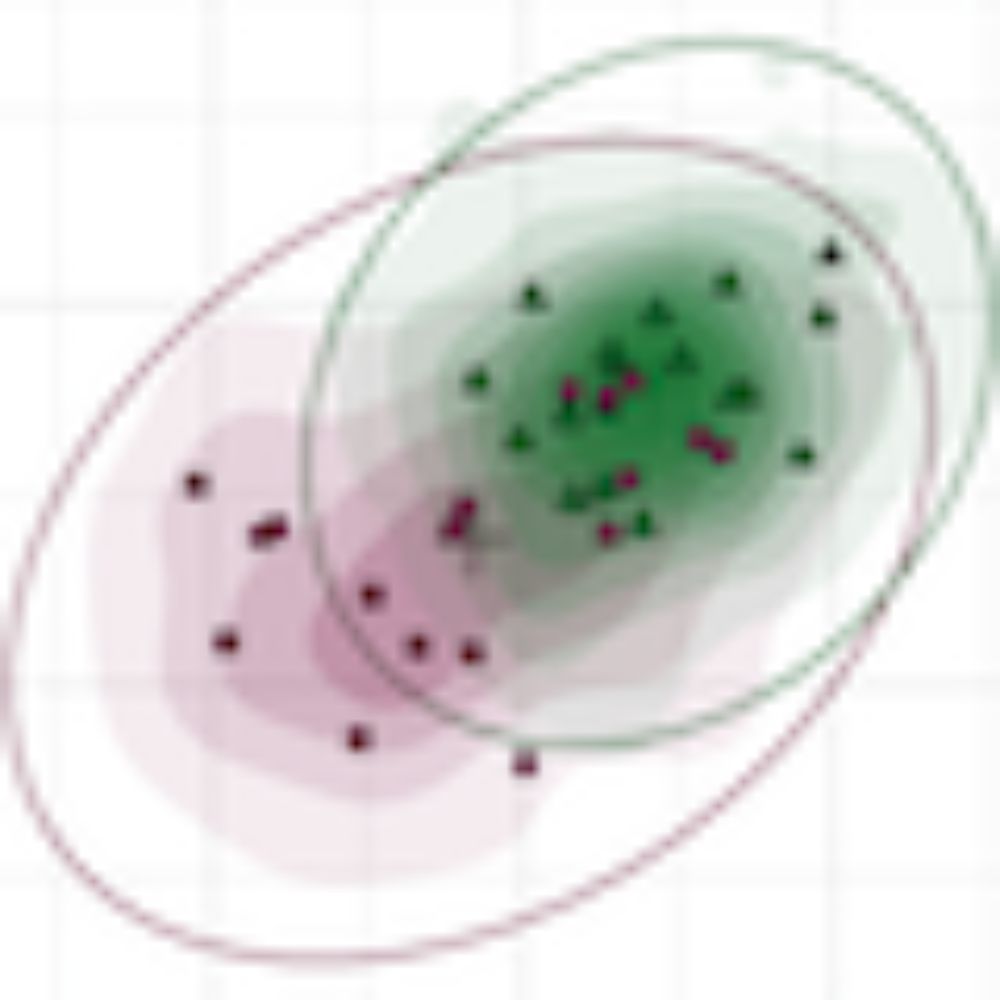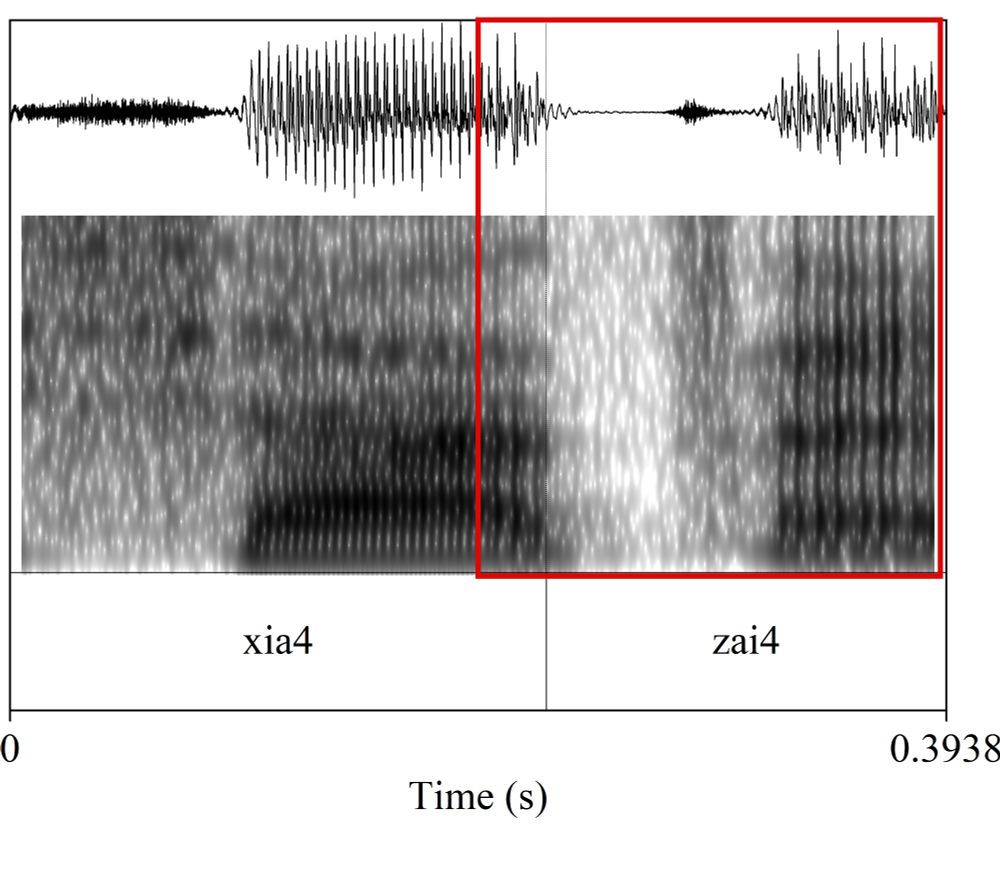Listeners use speaker gender information in non-native phoneme categorization
Speaker gender is known to affect phoneme categorization, and this effect is especially well-established in fricative perception: For example, in /s/-/θ/ categorization tasks, more /θ/ responses are g...
In #speechperception, listener expectations, e.g. about how sounds produced by men & women differ, can influence phoneme categorization. Do #L2 listeners use expectations about speaker gender even for contrasts absent from their #L1? #LabPhon #openaccess @isf-oeaw.bsky.social doi.org/10.16995/lab...
04.12.2025 19:11 — 👍 8 🔁 3 💬 0 📌 0

Syllable structure and lexical pitch accent in Split Croatian
Contour tones in most languages are restricted to relatively sonorous syllable types. Relatively rare are languages that permit contour tones on all syllables, including less sonorous ones. There is a...
Most languages phonologically restrict #contour #tones to more sonorous syllable types. How does #Split #Croatian, a language that permits contour tone crowding on all syllables, phonetically accommodate contours even for short vowels and obstruent codas? #LabPhon #openaccess doi.org/10.16995/lab...
04.12.2025 19:03 — 👍 2 🔁 0 💬 0 📌 0

The acquisition of L2 English complex onsets by L1 Farsi speakers
Much previous work has shown that sibilant-initial complex onsets (SC onsets) differ in their typological, phonological, articulatory, and acquisitional properties from other onsets. The exact mechani...
Complex onsets that begin with #sibilants differ from other complex onsets in their phonological properties, articulation, and acquisition. What makes them special?
#LabPhon #Farsi #L2Phonology #epenthesis #openaccess
doi.org/10.16995/lab...
06.11.2025 13:13 — 👍 0 🔁 0 💬 0 📌 0

Investigating potential MERGED and DISTINCT speakers in an ongoing merger — Evidence from production and perception
This study investigates whether it is possible to use evidence from production and perception to identify different types of speakers in the study of the ongoing merger of /ʃ/ and /ç/ in Norwegian. Sp...
Can we reliably identify MERGED vs. DISTINCT speakers during ongoing sound change? #Acoustics + #perception data from #Norwegian /ʃ, ç/ show that a principled boundary between speaker groups does not exist. doi.org/10.16995/lab...
#openaccess #LabPhon @timoroettger.bsky.social @stausland.bsky.social
21.10.2025 02:29 — 👍 7 🔁 2 💬 0 📌 0

The effects of contextual tonal variation on Cantonese tone merging
Previous studies on Cantonese tone merging have examined monosyllabic materials so far, yet disyllabic words are common in daily conversation. Sound change often originates from a pool of synchronic v...
Q: How does tonal coarticulation in disyllabic words of #Cantonese contribute to tone merging and inform research on #soundchange? A: The two interact dynamically, with carryover effects in extreme tonal contexts emerging as an important source of change. #LabPhon #openaccess doi.org/10.16995/lab...
03.10.2025 12:23 — 👍 3 🔁 3 💬 0 📌 0
The production and perception of Low Tone Alternations in Huaiyuan Chinese
Huaiyuan Mandarin is a Mandarin dialect that has three low-tone sandhi rules. T1 (low-falling) and T3 (low falling-rising) sandhis involve changing the first low tone to a mid-rising tone when two low...
When a tone in #Huaiyuan #Chinese changes to sound like another is it a perfect copy, or can listeners still hear a difference? An investigation of tone sandhi suggests that neutralization of perceptual categories can override subtle acoustic differences. doi.org/10.16995/lab...
#LabPhon #openaccess
16.09.2025 02:25 — 👍 1 🔁 0 💬 0 📌 0
Qualtrics Survey | Qualtrics Experience Management
The most powerful, simple and trusted way to gather experience data. Start your journey to experience management and try a free account today.
Take a short SURVEY to help #LabPhon20 organizers understand what might constrain in-person conference attendance, given issues of immigration, funding, and accessibility. We strive to make a realistic and equitable conference plan, including for students.
ubc.ca1.qualtrics.com/jfe/form/SV_...
06.09.2025 01:20 — 👍 1 🔁 2 💬 0 📌 0
Convening for #LabPhon20 in Montreal is an opportunity to celebrate 40 years of #LabPhon.
We invite the ALP community to gather videos, pictures, memories, & artifacts from the last 4 decades, for presentation in Montreal. To help curate and organize materials, please contact labphon20@gmail.com.
06.09.2025 01:14 — 👍 4 🔁 1 💬 0 📌 0
Call for Papers & Satellite Workshops | Labphon
CALL FOR PAPERS, #LabPhon20:
Deadline to submit abstracts is Dec 1, 2025. Abstract guidelines and submission link available in Oct 2025.
CALL FOR SATELLITE WORKSHOP PROPOSALS: Deadline for satellite workshop proposals is Nov 1, 2025. Events' date is June 25, 2026.
labphon.org/labphon20/ca...
06.09.2025 01:07 — 👍 5 🔁 5 💬 0 📌 0
Home | Labphon
The conference website for #LabPhon20 is now live: labphon.org/labphon20/home
#LabPhon 20 will happen in #Montréal, Québec, Canada, June 26–28, 2026, with additional pre-conference events on June 25. The call for papers and proposals for satellite workshops will be circulated in late August 2025.
09.07.2025 13:24 — 👍 12 🔁 9 💬 0 📌 0
Summer 2025 Workshop | Labphon
We are excited to announce our #LabPhon Association's 2025 off-season programming, a series of three events on #prosody and #suprasegmentals. All events are scheduled during July and August, and they're FREE for ALP members. 😎 🌞 Info and registration are available here: labphon.org/content/summ...
07.07.2025 13:07 — 👍 7 🔁 5 💬 0 📌 0
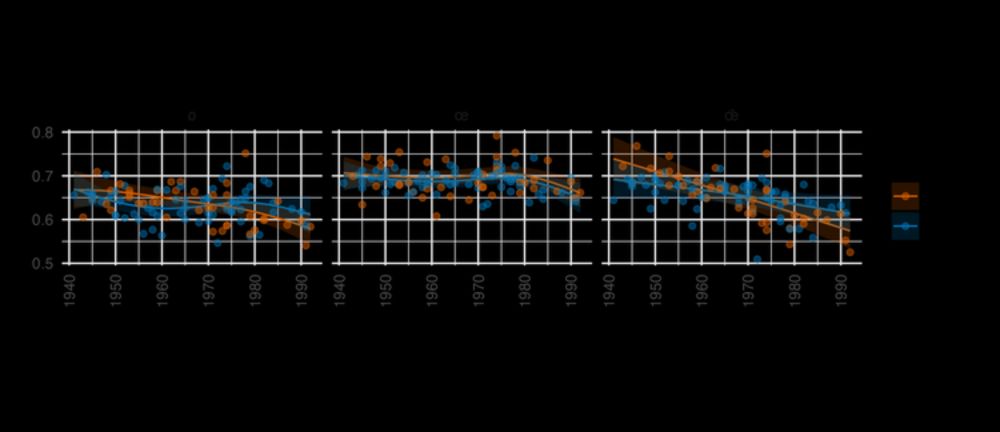
A new perspective on the development of Quebec French rhotic vowels
Quebec French is reportedly developing rhoticity, with low F3 resulting from a bunched or retroflexed tongue (like English /ɚ/), in some or all of the front mid rounded vowels /ø, œ, œ̃ /. The source ...
How do rare sound changes, like the development of rhotic vowels, actuate and spread? @massimolipari.github.io and @msonderegger.bsky.social show that rhotacization of 3 #QuebecFrench vowels emerges from an interplay of social + phonological pressures. #LabPhon #openaccess doi.org/10.16995/lab...
03.07.2025 19:57 — 👍 3 🔁 0 💬 0 📌 0
How final is final: The production and perception of utterance-medial and utterance-final boundaries
We examine the production and perception of two types of phrase-final prosodic boundaries, specifically, utterance-medial and utterance-final intonation phrase (IP) boundaries in German. These two typ...
New insights into German #prosody! How do speakers & listeners distinguish utterance-medial vs. utterance-final #intonation boundaries in #German? Subtle differences in intonation, particularly in the rhyme's f0, are key cues for listeners. #LabPhon #openaccess #kinematics doi.org/10.16995/lab...
14.06.2025 03:17 — 👍 8 🔁 3 💬 0 📌 0
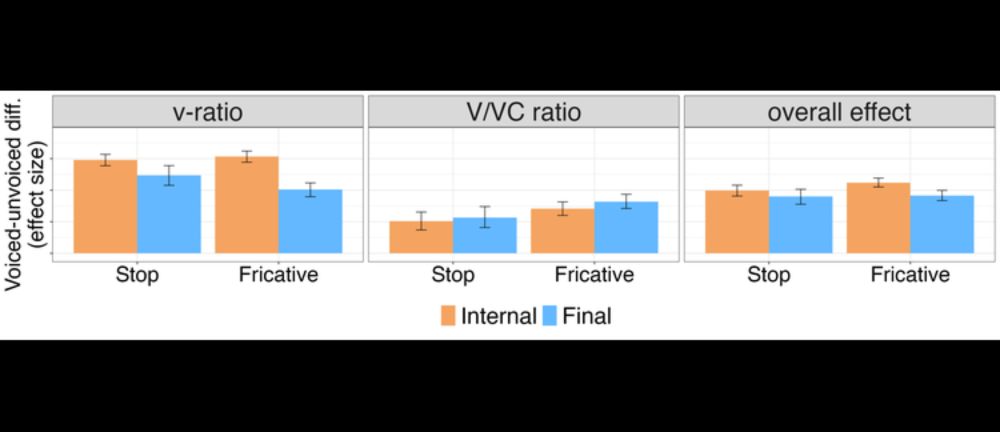
Final Devoicing before it happens: A large-scale study of word-final obstruents in French
This paper investigates the phonetic precursors of Final Devoicing in a large corpus of natural French speech. We argue that this evaluation should consider the magnitude of the [voice] contrast, rath...
Is final devoicing as well-understood as we think? A new #LabPhon paper uses large #French corpora + Bayesian modeling to show its phonetic precursors fit typology better when viewed as multidimensional contrast neutralization. #openaccess doi.org/10.16995/lab...
10.06.2025 20:46 — 👍 2 🔁 1 💬 0 📌 0
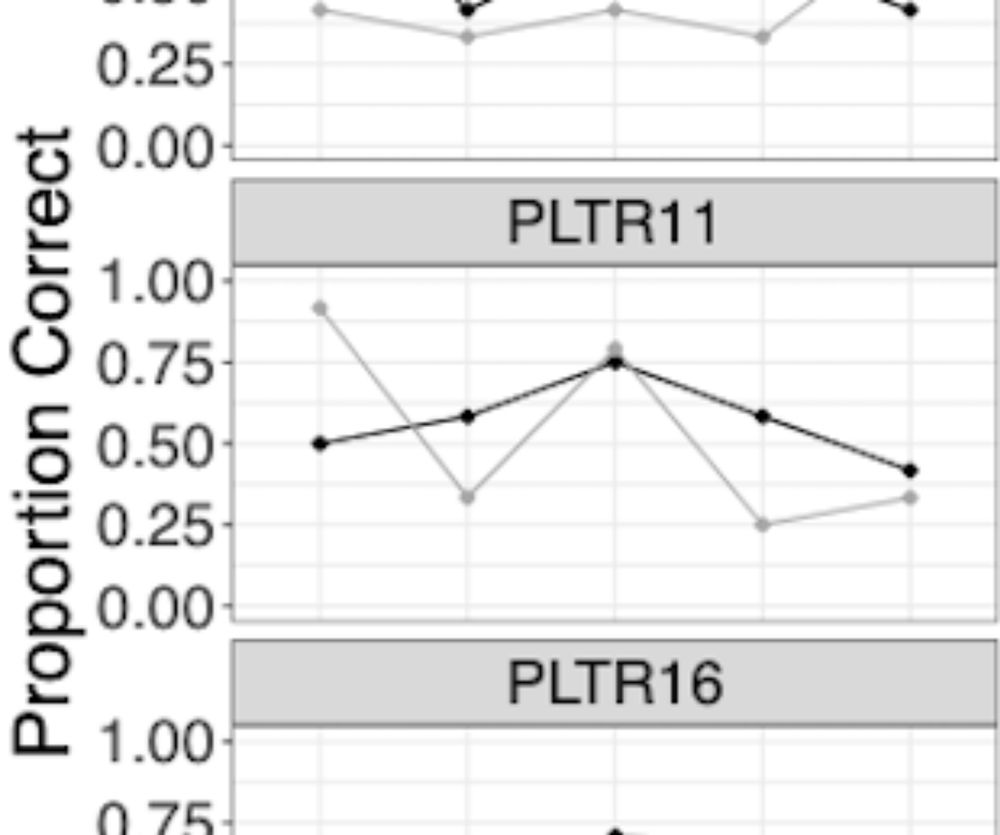
Learning new speech sounds in remote and in-person protocols: Benefits, drawbacks, and considerations for future research
In-laboratory training of novel speech sounds has provided significant insight into how adult language learners learn new sounds. However, this training is often costly in terms of time in lab for par...
New in #LabPhon: How well do adult language learners acquire new sound contrasts, in remote vs. in-laboratory environments? Results show that both paradigms result in learning, but there are trade-offs in both protocol types. @m2b2.bsky.social @spplab.bsky.social #openaccess doi.org/10.16995/lab...
20.05.2025 14:02 — 👍 9 🔁 4 💬 0 📌 0
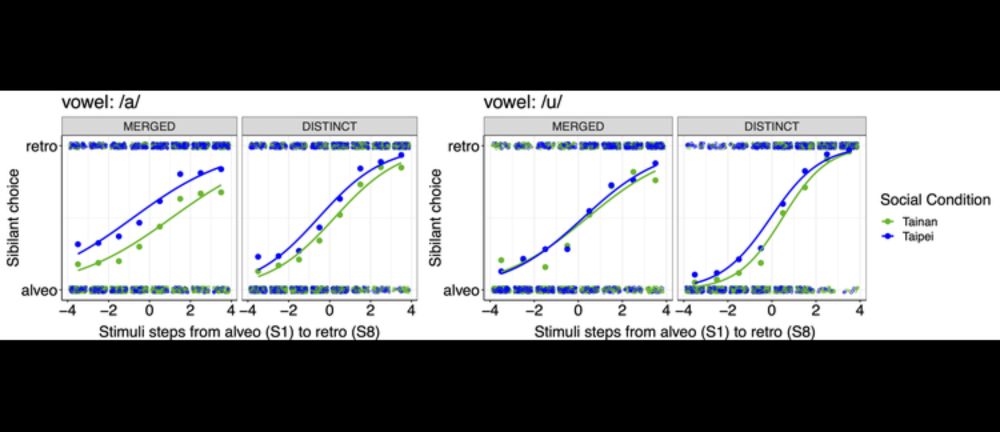
Linguistic experience and social factors in speech perception: the case of merged speakers of Mandarin sibilants
This work explores the combined effects of social expectations and a speaker’s production characteristics on the perception of alveolar versus retroflex sibilants that are variably merged in Taiwan Ma...
How are social expectations employed in cases of mergers in progress? A study of #TaiwanMandarin #sibilants finds that merged speakers may be somewhat desensitized to acoustic cues, but they readily employ social cues in speech perception. #sociophonetics #openaccess #LabPhon doi.org/10.16995/lab...
08.04.2025 11:57 — 👍 4 🔁 3 💬 0 📌 0
We're delighted to announce that #LabPhon20 will be held in Montréal, Québec, Canada, in the (North American) summer of 2026, with the theme “Looking back and looking forward.” Dates, thematic sessions, invited speakers and further information will be announced by the organizing committee. #LabPhon
19.02.2025 02:01 — 👍 33 🔁 12 💬 1 📌 0
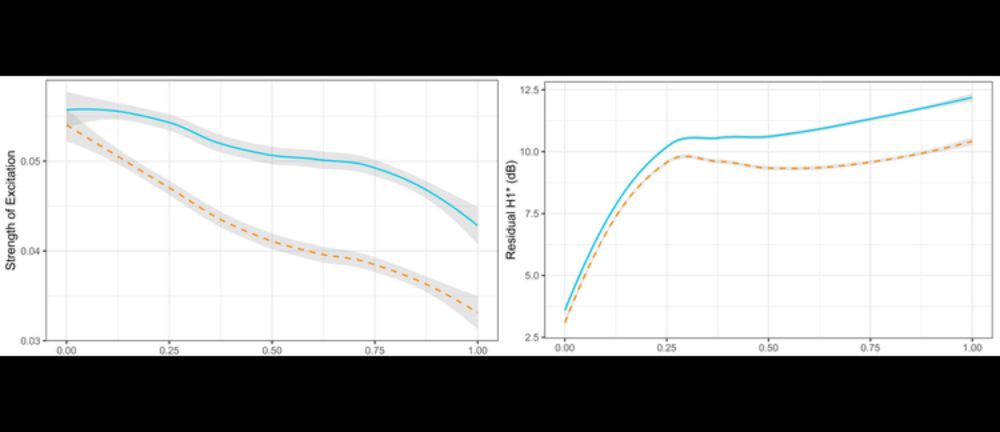
At the margins: phonology and phonetics of Zongozotla Totonac glottalization
Glottal stops and glottalized (“laryngealized”) vowels in Totonac and Tepehua languages are crucial for historical reconstructions, but their phonological and phonetic properties have often posed anal...
How marginal can phonological contrasts be? In Zongozotla #Totonac, phonation type and glottal stops are phonologically contrastive, but they are weakly differentiated phonetically and the glottal stops only surface phrase-finally. #LabPhon #openaccess #marginalcontrast doi.org/10.16995/lab...
01.02.2025 03:46 — 👍 3 🔁 2 💬 0 📌 1
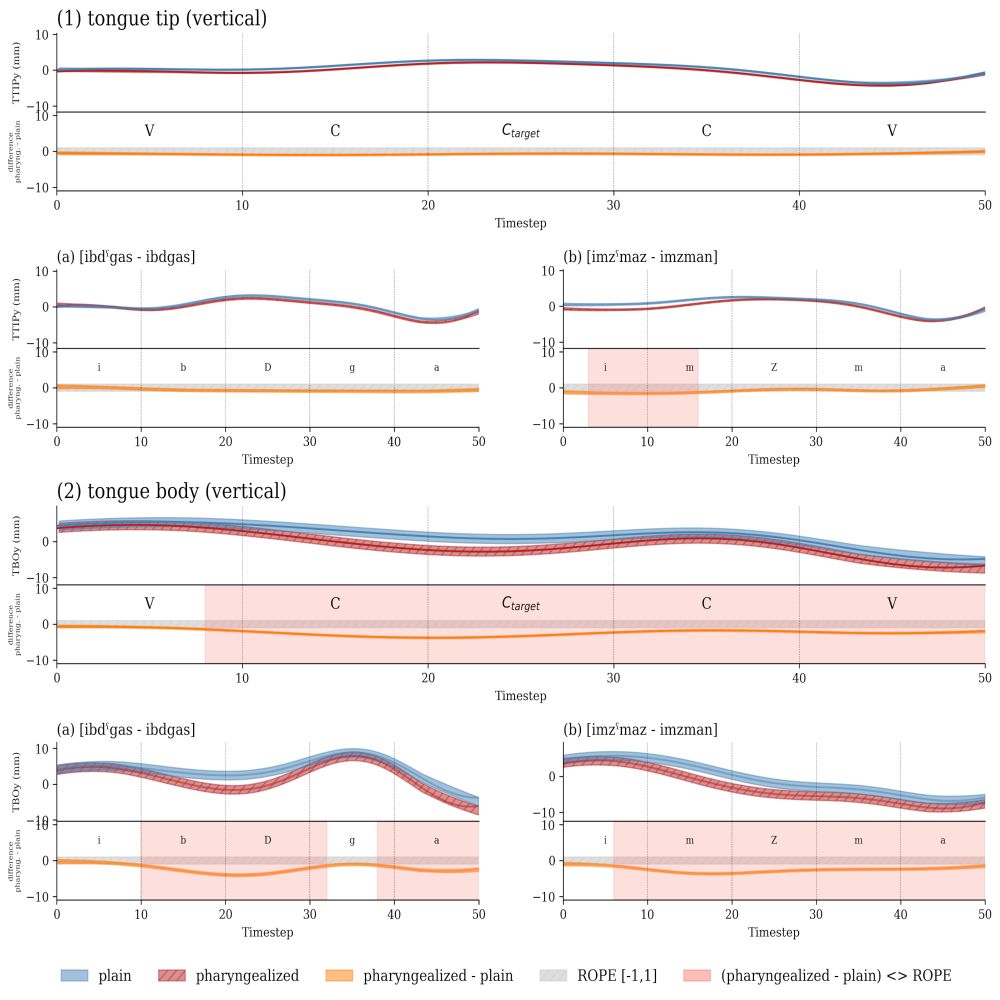
Pharyngealization in Tashlhiyt from kinematic and acoustic perspectives
This study investigated the implementation of pharyngealization in Tashlhiyt, across various linguistic contexts VCV, VCCV, VCCV, and VCCCV. We analyzed articulatory and acoustic data from six male sp...
How is pharyngealization realized in across linguistic contexts? In #Tashlhiyt, it's signaled in #coronals by a lowered tongue body & lowered F2 in nearby vowels, which can extend into larger phonetic domains. doi.org/10.16995/lab... #openaccess #LabPhon @phbuech.bsky.social @annehermes.bsky.social
28.01.2025 03:51 — 👍 16 🔁 6 💬 0 📌 1
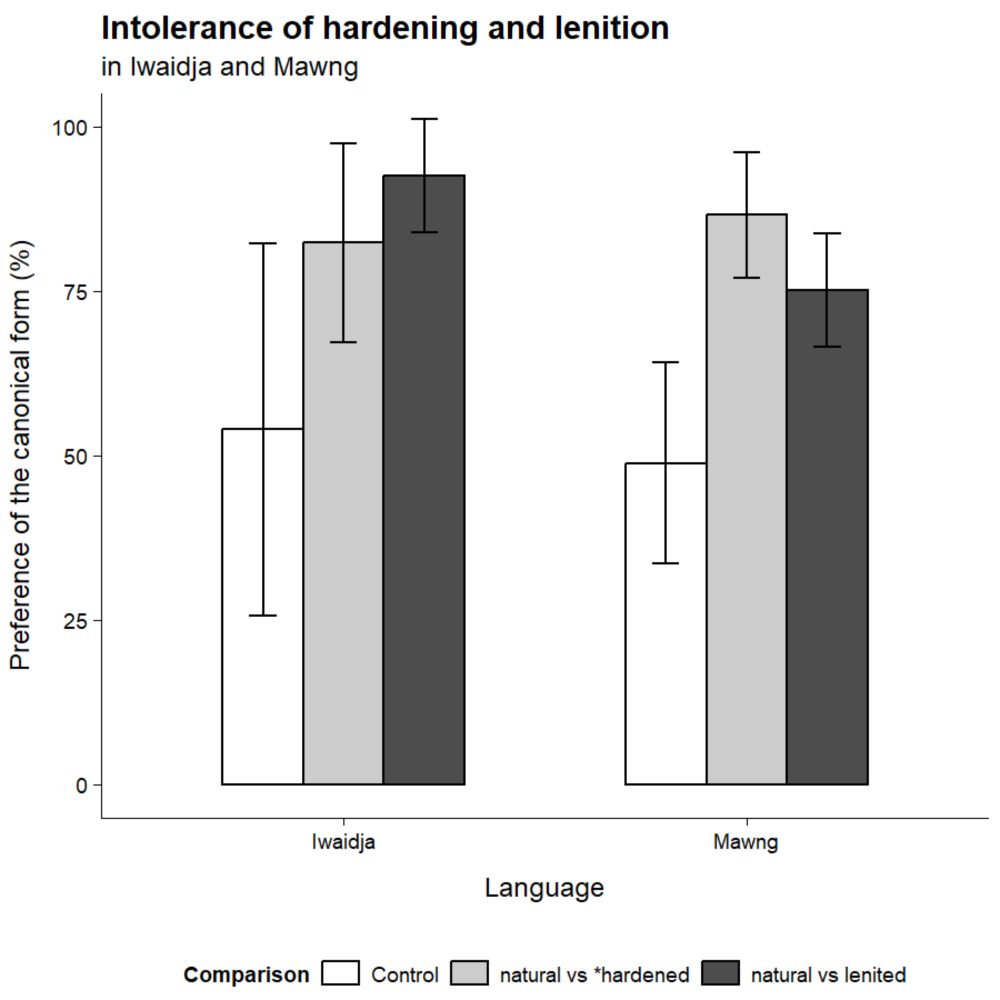
Lenition, fortition, and lexical access in Iwaidja and Mawng
Many models of word recognition assume that spoken words are faithful to their phonological shape in the lexicon and that word recognition begins with the first incoming segment and proceeds linearly....
Most models of #word recognition assume the input is faithful to #phonological specifications in the #lexicon, but it's not always the case. Results from #lenition in #Mawng & #Iwaidja explore how recognition occurs in such scenarios. @bjbaker.bsky.social #LabPhon #openaccess doi.org/10.16995/lab...
11.01.2025 22:44 — 👍 1 🔁 1 💬 0 📌 0
Hello, Bluesky! This is the account for the Association for Laboratory Phonology, #LabPhon. Follow here to learn about new publications in our journal, and other Association news.
#linguistics #phonetics #phonology
15.12.2024 05:03 — 👍 27 🔁 10 💬 0 📌 0
Assoc. Prof of Linguistics at Berkeley. Language, identity & prosody, esp. in politics & human-computer interaction. Trivia person, marathoner, coach. LA & the Bay! No one is illegal on stolen land. Views are my own.
https://nicolerholliday.wordpress.com
phonetician, linguist, associate professor, musician, gen x nerd, he/him
Linguist at CNRS. Hizkuntzalaria IKERen.
Historical Phonology, Phonetics, LabPhon, Sound Change.
Basque, endangered languages. Bayesian stats.
#ActuallyAutistic #rstats #antiracism
Santurtziarra eta irundarra.
Webpage: egurtzegi.github.io
Linguist, speech scientist, and anime enthusiast, in no particular order. 佢。
Linguist @ University of Kansas. Interested in phonetics, acquisition, sociolinguistics, and Korean. He.
https://jjholliday.github.io/
The Institute for Mind and Brain at the University of South Carolina works to understand the biological bases of the mind, brain, and cognition and intersections with health, aging, and neurodevelopment.
Linguist, musician, dad, cook, bad-joke afficionado…
Professor of psychology at Mount Holyoke College; Cognitive scientist studying speech and music
The Open Library of Humanities. Building a sustainable, diamond open access future for the humanities. Part of Birkbeck, University of London & makers of Janeway
Cognitive scientist / Linguist - Full Professor at University of Oslo
Director of @manylanguagesc.bsky.social, PI of ICONIC (https://www.hf.uio.no/iln/english/research/projects/iconic/)
#MetaScience #OpenScience
#DataViz #PresentationDesign #SciComm
Dog and baseball enthusiast
Assistant Prof. of Linguistics @ the University of Kansas.
Interdisciplinary researcher working with text and audio corpora at NZILBB. Interested in reproducible research and methods sharing in linguistics and digital humanities. "Wilson Black" is a surname.
Cognitive scientist, linguist, phonetician at the University of Zurich Dept. of Computational Linguistics
Linguist, computational phonetician, recovering academic.
Maintainer of Montreal Forced Alignment
Sometimes my tinkerings are useful
https://memcauliffe.com/
https://github.com/mmcauliffe
he/him
Speech/cognitive scientist, Professor at Aix-Marseille University, with an interest for speech perception in social interactions, week-end road cyclist
linguistics mostly, politics, Wisconsin
👩💼Postdoctoral researcher at Saarland University |👩🎓Ph.D.
Computational linguistics and phonetic, university of Zürich, Switzerland | 📝General coordinator ISCA-SAC
Ling prof in NH; intonation, lg. variation, lg. and identity, Jewish languages. Occasional runner, knitter, garment maker. she/her.








